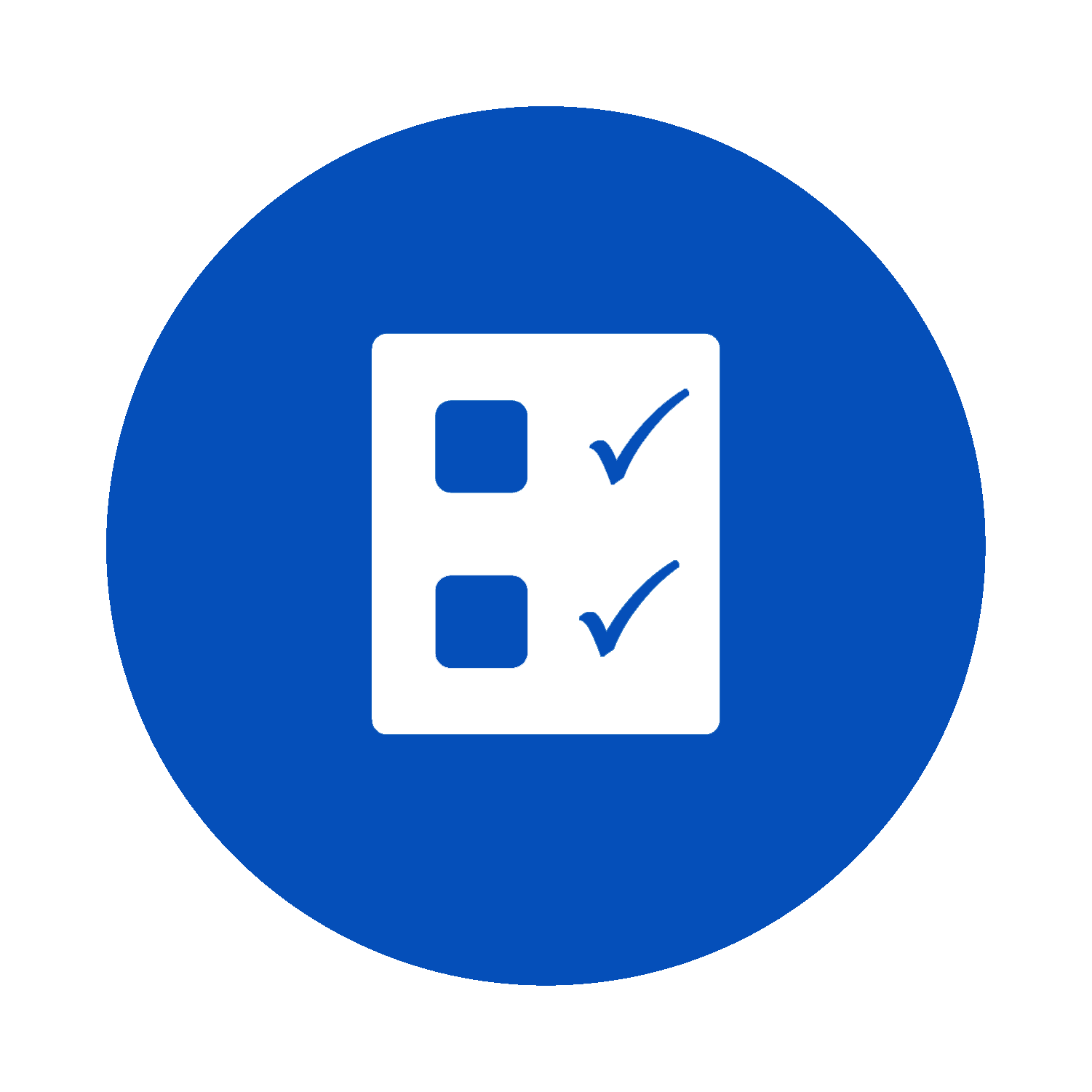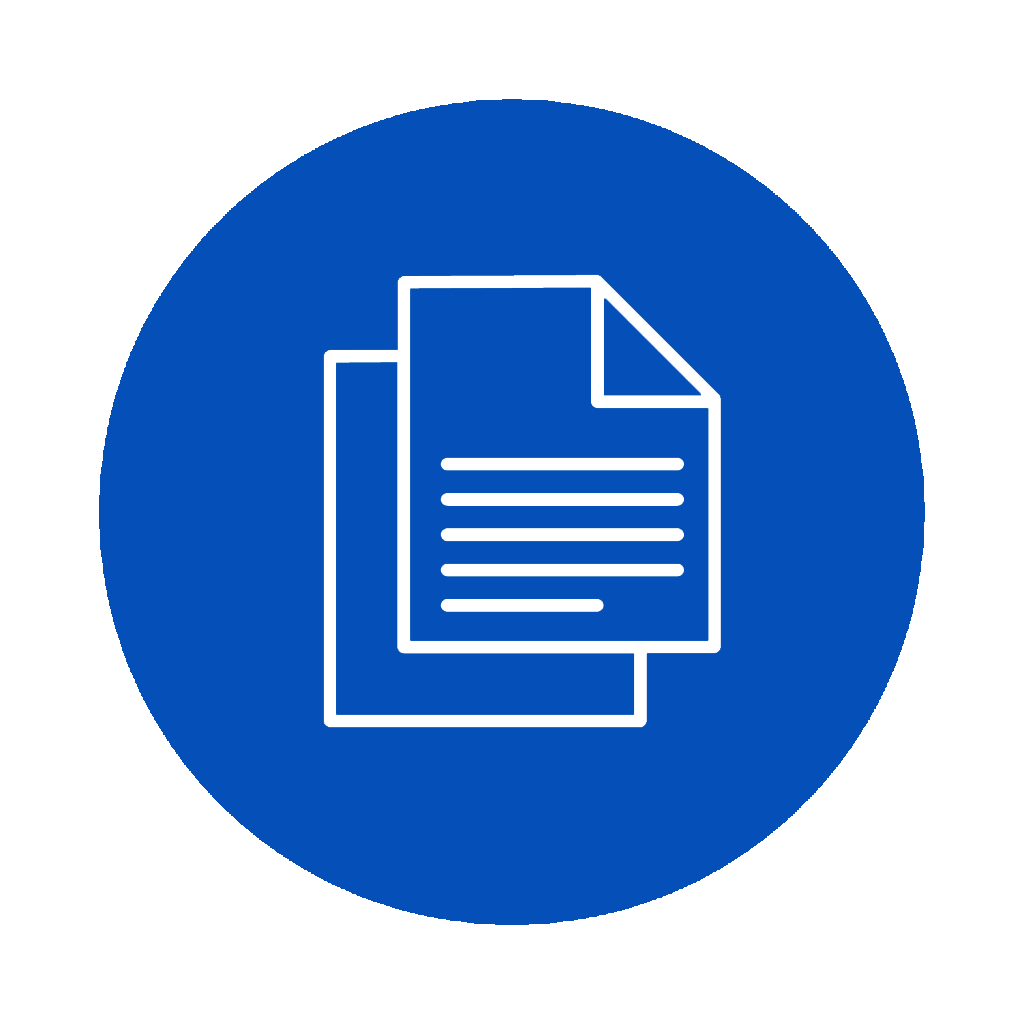Chapter 01. Introduction to Internal Auditing
01.05. Future Directions: Trends and Innovations in Auditing

Key Questions
![]() Briefly reflect on the following before we begin:
Briefly reflect on the following before we begin:
- What emerging technologies are currently shaping the future of internal auditing?
- How might the role of internal auditors change with the rise of data analytics and AI?
- What are the potential benefits and challenges of adopting agile and continuous auditing methodologies?
- How can internal auditors prepare for the evolving landscape of fraud detection and cybersecurity?
Emerging technologies revolutionizing traditional audit methodologies are at the forefront of this transformation. From artificial intelligence and robotic process automation to blockchain and machine language (ML), these technologies augment auditor capabilities, enhance data analysis capabilities, and improve audit efficiency and accuracy. Moreover, the rise of data analytics and big data presents immense opportunities for auditors to extract valuable insights from vast amounts of data, enabling more informed decision-making and proactive risk management.
In addition to technological advancements, this section delves into agile and continuous auditing methodologies, which offer a paradigm shift in audit practices. Organizations can adapt to rapidly changing business environments by adopting iterative and real-time audit approaches, identifying emerging risks, and enhancing audit responsiveness. Furthermore, the growing emphasis on sustainability and social responsibility underscores the need for auditors to assess an organization’s environmental, social, and governance (ESG) practices and their impact on long-term value creation. As auditors navigate these emerging trends and innovations, they must also embrace innovations in audit education and training to equip future auditors with the skills and competencies needed to thrive in a dynamic and digitally driven audit landscape. Through thoughtful analysis and foresight, stakeholders can anticipate and prepare for the next decade’s challenges and opportunities in internal auditing.
 Internal Audit in Action
Internal Audit in Action
Background
GreeneLife, a multinational environmental consultancy, has experienced significant growth due to the global push for sustainability. With operations spreading across continents, the complexity of its data and the need for sophisticated risk management strategies have increased. The internal audit team recognized the potential of data analytics to enhance their audit effectiveness and efficiency.
Innovation and Implementation
The Chief Audit Executive (CAE) initiated a project to integrate data analytics into the audit process. This involved training the audit team in data analytics tools and techniques and investing in software capable of handling large datasets and performing complex analyses. The team focused on areas where analytics could have the most significant impact, such as analyzing patterns in operational data to identify inefficiencies and potential risk areas.
Action and Outcome
A notable success was the audit of GreeneLife’s waste management services. Using data analytics, the audit team identified inconsistencies in waste reporting across different regions. This led to the discovery of under-reported waste figures in some areas, posing a risk to the company’s reputation and compliance status. The audit team provided recommendations for improving data collection and reporting processes, which were promptly implemented by management. This resolved the immediate issue and enhanced the overall quality of GreeneLife’s sustainability reporting.
Reflection
This scenario exemplifies how data analytics can revolutionize internal auditing by providing deeper insights into organizational data, leading to more informed decision-making. By adopting data analytics, GreeneLife’s internal audit team was able to add value beyond the scope of the traditional audit, positioning themselves as key contributors to the organization’s strategic objectives.
Emerging Technologies and Their Impact on Auditing
Emerging technologies are reshaping the landscape of internal auditing, offering both opportunities and challenges for auditors. Emerging technologies encompass various tools and platforms that revolutionize audits. These technologies include but are not limited to AI, RPA, blockchain, cloud computing, and the Internet of Things (IoT). The benefits of emerging technologies in auditing include the following:
- Automation and Efficiency: One of the significant impacts of emerging technologies on auditing is the automation of repetitive tasks. AI and RPA, for instance, can automate data collection, analysis, and report generation. This automation frees up auditors’ time, allowing them to focus on more strategic tasks such as risk assessment and analysis.
- Data Analytics and Insights: Emerging technologies have unlocked the potential of big data and data analytics in auditing. With vast amounts of data now accessible, auditors can perform more in-depth analyses and uncover previously hidden insights. Advanced data analytics tools can detect patterns, anomalies, and trends, providing valuable risk assessment and fraud detection insights.
- Enhanced Risk Assessment: By harnessing the power of emerging technologies, auditors can conduct more comprehensive risk assessments. Predictive analytics and machine learning algorithms can analyze historical data and predict future risks more accurately. This proactive approach to risk assessment enables organizations to anticipate and mitigate potential risks before they escalate.
- Improved Audit Quality and Assurance: Using emerging technologies enhances audit quality and assurance by reducing human error and bias. Automated audit procedures ensure consistency and standardization across audits, minimizing the risk of oversight or omission. Additionally, advanced technologies provide auditors with real-time access to data, enabling them to make more informed decisions and recommendations.
Despite the numerous benefits, integrating emerging technologies into auditing poses particular challenges. Auditors must grapple with issues such as data privacy, cybersecurity risks, and the need for specialized skills and training. Moreover, technological advancement requires auditors to stay abreast of the latest developments and adapt their audit methodologies accordingly.
The role of emerging technologies in auditing is only expected to grow. As organizations embrace digital transformation, auditors must leverage these technologies to remain relevant and practical. However, success will hinge on auditors’ abilities to navigate the complexities and risks associated with emerging technologies while upholding the principles of integrity, objectivity, and professionalism.
The Rise of Data Analytics and Big Data in Auditing
The rise of data analytics and big data in auditing signifies a transformative shift in the way that audits are conducted and how auditors derive insights. This shift leverages vast data to enhance audit quality, efficiency, and effectiveness. Data analytics involves using techniques and technologies to analyze data sets to identify patterns, anomalies, and trends. In contrast, big data refers to the vast volumes of data generated from various sources, including transactional systems, social media, and IoT devices. Critical aspects of data analytics include the following:
Enhanced Risk Assessment and Planning: Data analytics allows auditors to perform more sophisticated risk assessments by analyzing entire data populations rather than relying on samples. This approach leads to more accurate and comprehensive identification of risk areas, enabling auditors to focus their efforts where it matters most and plan their audits more effectively.
Increased Audit Efficiency: Data analytics tools can automate routine data collection and analysis tasks, significantly reducing the time and effort required. This automation allows auditors to allocate more time to complex audit areas, improving overall efficiency.
Improved Audit Quality: By analyzing complete data sets, auditors can identify exceptions and anomalies that may not have been detected through traditional sampling methods. This capability enhances the quality of the audit findings and supports more informed decision-making by management and stakeholders.
Detection of Fraud and Errors: Data analytics and big data technologies are particularly effective in identifying patterns and trends indicative of fraudulent activities or errors. Advanced analytics techniques, such as predictive modelling and machine learning, can uncover subtle correlations and anomalies that may indicate fraud or significant errors, enhancing the auditor’s ability to protect the organization.
Real-time Auditing: The continuous generation and analysis of big data enable a move toward real-time auditing. This approach allows auditors to identify and address issues as they arise rather than months after. Real-time auditing enhances the timeliness and relevance of audit findings, providing management with actionable insights more quickly.
Challenges and Considerations: Adopting data analytics and big data in auditing also presents challenges, including the need for auditors to develop new data science and analytics skills. It is also necessary to ensure the quality and integrity of the analyzed data and considerations around data privacy and security. Moreover, auditors must maintain their professional skepticism and judgment, recognizing that data analytics tools complement but do not replace their expertise.
Agile and Continuous Auditing Methodologies
Agile and continuous auditing methodologies represent significant trends in the evolution of the auditing profession, aiming to increase the flexibility, efficiency, and effectiveness of audit processes in a rapidly changing business environment. Key aspects of both agile and continuous auditing are summarized here:
Agile Auditing
Agile auditing draws from the principles of agile project management, emphasizing flexibility, collaboration, and client involvement. This approach involves breaking down the audit process into smaller, manageable segments or “sprints,” allowing auditors to quickly adapt and respond to changes. Agile auditing prioritizes high-value activities, encourages regular feedback from stakeholders, and fosters a collaborative work environment. This methodology enhances the ability of the audit function to deliver timely, relevant insights and recommendations, aligning more closely with organizational needs and strategic goals.
Critical components of Agile auditing include:
- Iterative Planning: Audits are planned in short cycles, allowing for adjustments based on new insights or changes in the organization’s risk landscape.
- Continuous Communication: Regular meetings with stakeholders ensure that audit activities remain aligned with organizational priorities and that findings are communicated promptly.
- Flexibility: Auditors can quickly shift focus to emerging risks or areas of concern, enhancing the audit’s relevance and value.
Continuous Auditing
Continuous auditing involves using automated tools and systems to perform audit activities more frequently or continuously. This approach leverages technology to monitor and analyze critical data and transactions in real-time or near-real-time, allowing auditors to identify issues and trends as they occur. Continuous auditing extends beyond traditional periodic audits, providing a dynamic assessment of risk and controls.
Key benefits of continuous auditing include:
- Timely Risk Detection: Continuous monitoring of transactions and controls enables early detection of potential issues, reducing the likelihood of significant problems.
- Enhanced Operational Efficiency: Automating routine audit tasks frees auditors to focus on more complex areas, increasing the overall efficiency of the audit function.
- Improved Stakeholder Confidence: Regular, up-to-date audit findings enhance the confidence of management, the board, and external stakeholders in the organization’s risk management and control processes.
Sustainability and Social Responsibility in Auditing
Sustainability and social responsibility in auditing reflect the expanding scope of audit functions, including ESG factors. This trend is driven by increasing awareness of the impact of businesses on society and the environment and growing stakeholder demands for transparency and accountability.
Integrating sustainability and social responsibility into auditing presents challenges, including the need for auditors to acquire knowledge and skills in these areas and develop appropriate standards and criteria for evaluation. However, it also offers opportunities for auditors to add significant value by helping organizations navigate the complexities of sustainable and ethical business practices, improve their ESG performance, and meet stakeholders’ expectations. As sustainability and social responsibility become increasingly important to businesses and their stakeholders, auditors will play a crucial role in ensuring that organizations act responsibly and sustainably. This evolution in auditing reflects a broader shift toward more ethical, transparent, and sustainable business practices, aligning the interests of businesses with those of society and the environment.
Key aspects of both sustainability and social responsibility are summarized below:
Sustainability Auditing
Sustainability auditing focuses on evaluating an organization’s environmental impact and its efforts toward sustainability. Auditors assess the accuracy of sustainability reports, the effectiveness of environmental management systems, and the organization’s compliance with environmental laws and regulations. This type of auditing helps organizations identify areas for improvement in their environmental performance, reduce waste and inefficiencies, and enhance their reputation among consumers, investors, and regulators.
Key aspects of sustainability auditing include:
- Resource Efficiency: Evaluating how effectively the organization uses natural resources and energy and identifying opportunities for conservation.
- Emissions and Waste Management: Assessing compliance with emissions and waste disposal regulations and evaluating practices for reducing environmental impact.
- Sustainability Reporting: Verifying the accuracy and completeness of information disclosed in sustainability reports.
Social Responsibility Auditing
Social responsibility auditing examines how an organization manages its relationships with employees, suppliers, customers, and the communities in which it operates. This includes evaluating compliance with labour laws, assessing the fairness and ethicality of business practices, and measuring the organization’s contributions to community development and well-being.
Key aspects of social responsibility auditing include:
- Labour Practices: Ensuring that the organization adheres to laws and standards regarding workers’ rights, health and safety, and fair treatment.
- Supply Chain Ethics: Evaluating the ethical practices of suppliers, including their labour practices and environmental impact.
- Community Engagement: Assessing the organization’s efforts to contribute positively to the communities in which it operates, such as through charitable activities, economic development initiatives, and environmental conservation projects.
The Changing Landscape of Fraud Detection and Cybersecurity
The changing landscape of fraud detection and cybersecurity represents a crucial area of focus for internal auditing, reflecting the evolving risks in the digital age. As organizations increasingly rely on technology for their operations, the dangers of cyber threats and fraud have escalated, demanding more sophisticated and proactive approaches to detection and prevention.
Fraud Detection
The evolution of fraud in the digital era has been marked by increasing sophistication, with fraudsters leveraging technology to carry out complex schemes. This has necessitated a shift in fraud detection strategies, moving from traditional reactive methods to more proactive, technology-driven approaches. Data analytics, artificial intelligence, and machine learning are now integral to identifying fraudulent activities. These technologies can analyze vast amounts of data in real time to detect anomalies, patterns, and correlations that may indicate fraudulent behaviour. For example, predictive analytics can identify potential fraud in financial transactions by analyzing discrepancies and unusual patterns.
Cybersecurity
Cybersecurity has expanded significantly, with threats ranging from data breaches and ransomware attacks to sophisticated state-sponsored cyberattacks. Internal auditors play a critical role in assessing the organization’s cybersecurity posture, ensuring adequate controls are in place to protect against and respond to cyber threats. This involves evaluating technical controls, organizational policies, employee training programs, and incident response plans. Auditors must stay abreast of the latest cybersecurity trends and threats, understanding how emerging technologies such as blockchain and IoT devices can impact the organization’s security landscape.
Integrating Fraud Detection and Cybersecurity into Audit Plans
Internal auditors must integrate fraud detection and cybersecurity considerations into their plans. This includes conducting risk assessments that specifically address the potential for fraud and cyber threats, evaluating the effectiveness of the organization’s fraud detection and cybersecurity measures, and recommending enhancements based on best practices and industry standards. Auditors may also leverage technology, such as automated audit tools and cybersecurity assessment frameworks, to conduct their evaluations more effectively.
Integrating fraud detection and cybersecurity into auditing presents challenges, including requiring auditors to possess specialized knowledge and skills. Additionally, the rapid pace of technological change requires auditors to continuously update their knowledge to understand new threats and mitigation strategies. However, these challenges also present opportunities for auditors to add significant value to their organizations by helping to safeguard against financial loss, reputational damage, and legal liabilities associated with fraud and cyber threats.
Predictions for the Next Decade in Internal Auditing
Predictions for the next decade in internal auditing point toward an increasingly dynamic profession integrated with technology and pivotal in addressing complex risks and strategic challenges within organizations. These predictions reflect broader trends in business, technology, and society, highlighting the evolving role of internal auditors as strategic partners, risk advisors, and guardians of corporate integrity.
- Increased Reliance on Technology: Internal auditing will increasingly rely on technology over the next decade. Emerging technologies like artificial intelligence (AI), blockchain, and the IoT will be regularly used in audits to analyze large datasets, automate routine tasks, and provide real-time insights into organizational risks and performance. Integrating these technologies will enhance the efficiency and effectiveness of audits, enabling auditors to focus on strategic analysis and decision support.
- Data Analytics as a Core Competency: Data analytics will become a core competency for internal auditors. The ability to interpret complex datasets, identify trends, and predict future risks will be essential. Auditors will need to develop skills in data science and analytics to leverage the full potential of big data in audit processes, from risk assessment to fraud detection and operational efficiency reviews.
- Shift Toward Continuous and Agile Auditing: Reflecting the need for more adaptive and responsive audit functions, the shift toward continuous and agile auditing methodologies will accelerate. Continuous auditing will allow for real-time risk assessment and control testing. At the same time, agile methodologies will enable audit functions to quickly adjust priorities and resources in response to changing organizational needs and emerging risks.
- Focus on Sustainability and Social Responsibility: As global concerns over sustainability and social responsibility grow, internal audits will increasingly include assessments of environmental, social, and governance (ESG) factors. Auditors will evaluate the organization’s sustainability initiatives, social impact, and adherence to ethical standards, ensuring that ESG considerations are integrated into strategic planning and risk management.
- Enhanced Role in Cybersecurity and Information Protection: With cyber threats posing significant organizational risks, internal auditors will be more prominent in assessing cybersecurity measures and information protection practices. This will involve evaluating technical controls and reviewing organizational policies, employee training, and incident response plans to ensure comprehensive cyber risk management.
- Collaboration and Cross-Functional Teams: Internal auditing will become more collaborative, involving cross-functional teams with experts from various disciplines. This approach will enable auditors to address complex, interdisciplinary risks related to digital transformation, supply chain vulnerabilities, and regulatory compliance. Collaboration with IT, finance, operations, and other functions will be critical to providing holistic insights and recommendations.
- Evolving Educational and Training Requirements: The education and training of internal auditors will evolve to keep pace with changing demands. Continuous professional development will focus on new technologies, data analytics, cybersecurity, and soft skills such as strategic thinking, communication, and ethical judgment. Professional bodies and educational institutions will offer specialized courses and certifications to prepare auditors for these challenges.
 Internal Audit in Action
Internal Audit in Action
Background
E-Purce, a leading digital payment solutions provider, operates in a highly dynamic and competitive fintech industry. The rapid pace of technological change and the sensitivity of financial data called for a more proactive audit approach to manage risks effectively.
Strategic Shift
To address this need, the internal audit department at E-Purce adopted a continuous auditing methodology. This involved using automated tools and systems to monitor key risk indicators and control effectiveness in real-time. The CAE worked closely with IT specialists to set up systems that could flag anomalies and potential areas of concern without waiting for periodic audit cycles.
Implementation and Outcome
An early win for the continuous auditing initiative was detecting a pattern of unusual transactions in one of E-Purce’s new digital wallet services. The constant auditing system flagged these transactions for further investigation, identifying a software glitch that could have caused significant financial loss and reputational damage if left unchecked. Prompt action was taken to fix the issue, and additional controls were implemented to prevent similar occurrences.
Reflection
This scenario demonstrates the transformative potential of continuous auditing in enhancing the timeliness and relevance of audit findings. By adopting a constant auditing approach, E-Purce’s internal audit team could provide real-time assurance, enabling the company to respond swiftly to emerging risks and maintain its competitive edge. This approach reflects a significant trend toward more agile and responsive audit methodologies driven by technological advancements and changing business landscapes.
 Key Takeaways
Key Takeaways
Let’s recap the concepts discussed in this section by reviewing these key takeaways:
- Emerging technologies like artificial intelligence, blockchain, and the IoT are revolutionizing audits by enhancing the ability of auditors to analyze large datasets, automate routine tasks, and provide real-time insights into organizational risks and performance, significantly improving efficiency, accuracy, and the scope of audit activities.
- By leveraging data analytics and big data in auditing, auditors can interpret complex datasets, identify trends, and predict future risks, leading to a more thorough understanding of organizational risks and the effectiveness of internal controls.
- Inspired by agile project management principles, Agile auditing focuses on flexibility, collaboration, and stakeholder involvement. In contrast, continuous auditing uses technology to monitor and analyze critical data in real time, allowing auditors to address issues promptly.
- Audits increasingly focus on assessing how organizations manage their environmental footprint, social impacts, and governance practices, emphasizing the integration of Environmental, Social, and Governance (ESG) considerations into strategic planning and risk management.
- The changing landscape of fraud detection and cybersecurity presents new challenges for internal auditors, who are crucial in assessing an organization’s cybersecurity measures and protecting against evolving cyber threats. Using advanced technologies and data analytics in fraud detection enhances auditors’ abilities to effectively identify fraudulent activities and cyber risks.
 Knowledge Check
Knowledge Check
 Review Questions
Review Questions
- What are the two key benefits of using artificial intelligence (AI) in auditing?
- How does data analytics contribute to the audit process?
- Describe the main difference between Agile auditing and continuous auditing.
- Why are sustainability and social responsibility becoming a focal point in auditing?
- What role do audit education and training innovations play in preparing auditors for future challenges?
 Essay Questions
Essay Questions
- Consider a multinational corporation that is undergoing digital transformation. Discuss how the integration of blockchain technology could impact the auditing processes within this corporation, explicitly considering the areas of transaction integrity, supply chain transparency, and regulatory compliance.
- In internal auditing, explain how data analytics and big data can enhance fraud detection capabilities, including the data analysis techniques employed and the challenges auditors might face in implementing these technologies.
 Mini Case Study
Mini Case Study
FinTech Innovations Inc. is a rapidly growing financial technology company that has embraced several emerging technologies to stay ahead in the competitive market. The company has implemented blockchain for secure transactions, utilizes data analytics for customer insights, adopted agile methodologies in its project management, and is committed to sustainability and social responsibility in its operations. Additionally, FinTech Innovations Inc. has recently upgraded its cybersecurity measures to protect against the increasing threat of cyberattacks.
The internal audit team at FinTech Innovations Inc., led by Roozbeh, is tasked with auditing the effectiveness of these initiatives and their alignment with the company’s strategic goals. The team needs to assess the integrity of blockchain transactions, the effectiveness of data analytics in decision-making, the agility of project management processes, the company’s sustainability practices, and the robustness of its cybersecurity measures.
Required: Given the diverse range of technologies and methodologies adopted by FinTech Innovations Inc., how should Roozbeh and the internal audit team approach the audit to ensure comprehensive coverage of these areas? Consider the specific risks and controls associated with each location and propose audit strategies that Roozbeh could employ to evaluate the effectiveness of the company’s initiatives.
Criteria used to evaluate an organization's impact on the environment, social equity, and governance practices, influencing investment and operational decisions.
Audit approach using technology and automation to collect, analyze, and report on audit data continuously and instantly, enhancing agility, efficiency, and responsiveness in auditing processes.
Audit methodology emphasizing flexibility, collaboration, and iterative processes to adapt quickly to changes, improve efficiency, and address emerging risks or priorities.
A method that uses technology to perform audit-related activities on a continuous basis, providing real-time assurance over business processes.
The process of identifying and investigating instances of fraud within an organization to prevent financial losses and safeguard assets.
The practice of protecting systems, networks, and programs from digital attacks to ensure data integrity, confidentiality, and availability.

